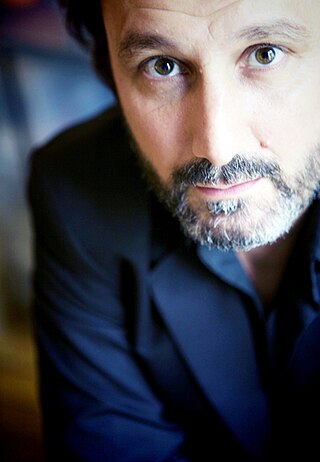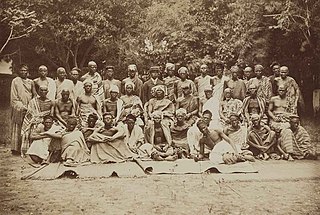Related Research Articles

Photojournalism is journalism that uses images to tell a news story. It usually only refers to still images, but can also refer to video used in broadcast journalism. Photojournalism is distinguished from other close branches of photography by having a rigid ethical framework which demands an honest but impartial approach that tells a story in strictly journalistic terms. Photojournalists contribute to the news media, and help communities connect with one other. They must be well-informed and knowledgeable, and are able to deliver news in a creative manner that is both informative and entertaining.

Sir Donald McCullin is a British photojournalist, particularly recognised for his war photography and images of urban strife. His career, which began in 1959, has specialised in examining the underside of society, and his photographs have depicted the unemployed, downtrodden and impoverished.
Documentary photography usually refers to a popular form of photography used to chronicle events or environments both significant and relevant to history and historical events as well as everyday life. It is typically undertaken as professional photojournalism, or real life reportage, but it may also be an amateur, artistic, or academic pursuit.
Photography in China dates back to the mid-19th century with the arrival of European photographers in Macao. In the 1850s, western photographers set up studios in the coastal port cities, but soon their Chinese assistants and local competition spread to all regions.

Wilfrid Estève is a French photojournalist and portraitist. Since 1995, his work has appeared in publications including ELLE, Libération, Le Monde, Geo France, Marie-Claire, National Geographic France, Paris Match and VSD, and was awarded a "special mention" award in the 2005 Prix Nadar competition, along with other co-authors, for his work 'Photojournalism at the crossroads'.

Yannis Behrakis was a Greek photojournalist and a Senior editor with Reuters.

LagosPhoto Festival is the first international art festival of photography in Nigeria, launched in October 2010. It is organised by the African Artists’ Foundation (AAF) as part of an ongoing project designed to use art in public spaces, as a medium for increasing societal awareness. The festival includes workshops and classes for professional artists, art fairs and indoor and outdoor exhibitions citywide. LagosPhoto is held annually and features emerging photographers alongside established photographers.

The participation of women in photography goes back to the very origins of the process. Several of the earliest women photographers, most of whom were from Britain or France, were married to male pioneers or had close relationships with their families. It was above all in northern Europe that women first entered the business of photography, opening studios in Denmark, France, Germany, and Sweden from the 1840s, while it was in Britain that women from well-to-do families developed photography as an art in the late 1850s. Not until the 1890s, did the first studios run by women open in New York City.
Andrew Esiebo is a Nigerian photographer. He has covered personal projects and assignments on primarily Nigeria and West Africa but has gained international recognition.
Johnson Donatus Aihumekeokhai Ojeikere, known as J.D. 'Okhai Ojeikere, was a Nigerian photographer known for his work with unique hairstyles found in Nigeria.
Aisha Augie-Kutapronunciation is a Nigerian photographer and filmmaker based in Abuja. She is an Hausa from Argungu Local Government Area in northern Nigeria. She won the award for Creative Artist of the year at the 2011 The Future Awards. Her work spans across documentary, fashion and aerial photography. She uses juxtaposition in her work as her way of pushing the idea that there are always two sides of a story; this comes from her background in photojournalism and Mass Communication. Her personal projects explore issues of gender and identity influenced by her experiences as a female, mixed race and mixed tribe individual who struggled to fit in earlier in life.

The Saro, or Nigerian Creoles of the nineteenth and early twentieth centuries, were Yoruba Liberated Africans emancipated and initially resettled in Freetown, Sierra Leone by the Royal Navy, which, with the West Africa Squadron, enforced the abolition of the international slave trade after the British Parliament passed the Slave Trade Act 1807. Those freedmen who migrated back to Nigeria from Sierra Leone, over several generations starting from the 1830s, became known locally as Saro(elided form of Sierra Leone, from the Yoruba sàró). Consequently, the Saro are culturally descended from Sierra Leone Creoles, with ancestral roots to the Yoruba people of Nigeria.
Ruben Salvadori is an Italian media professional and photojournalist known for his project 'Photojournalism Behind the Scenes', through which he challenged the dramatic aesthetics of conflict images and the expectation of objective truth by including the photographer in the frame. Salvadori has ignited a discussion about the ethics of the profession and the need for the audience to be an active viewer by acknowledging the inevitable subjectivity of the photographic medium.
Marilyn Nance, also known as Soulsista, is an American multimedia artist known for work focusing on exploring human connections, African-American spirituality, and the use of technology in storytelling.
The history of Spanish photojournalism, developed since the beginning of twentieth century, was closely tied to the cultural, historical and political discourse of the time. The Spanish colonisation of Morocco (1912–1956) shaped the photojournalist practices such that, a plethora of photographs were focusing on reaffirming Spain's Islamic past and portraying the ethnic, social and cultural ties of Spain to North Africa. Technical advancements in photography led to a rising interest in photography as publishers began complementing their texts with photographs. During the Civil War (1936–1939) photojournalism served as an objective transcription of the realities of the conflict between the Republican and Nationalist forces and influenced public opinion abroad.

Akintunde Akinleye is a photojournalist whose images centre around photo-activism and trial narrative subjects. A former Reuters photographer covering West Africa, his photography has documented Nigeria's postcolonial history. He is the first Nigerian photographer to receive the World Press Photo prize (2007), for his image of a pipeline explosion in Lagos. The same year, he received the National Geographic All Roads award. His photographs have been published in Time, Vogue, The New York Times, and other publications.

Neils Walwin Holm was a West African photographer who later retrained as a barrister. He was "the pre-eminent photographer of Lagos, West Africa, from the 1890s until 1910".
Sani Mohammed Maikatanga born is a Nigerian photographer who won the Global Landscapes Forum (GLF) Africa 2022 Photo Competition. Maikatanga is best known for his work with indigenous people and isolated communities in northern Nigeria, as well as traditional activities and popular landscapes. His coverage of the popular Argungu finishing festival earned him the GLF Africa Award 2022 Photo Competition.
References
- 1 2 3 4 5 6 7 8 Érika Nimis (31 May 2001). "Nigeria: the photographic giant". Africultures.
- ↑ Paul Jenkins (2005). "A Provisional Survey of Nineteenth Century Photography on the Gold Coast and in Ashanti". Journal des Africanistes. 75 (2).
- ↑ Charles Gore (2013). "Neils Walwin Holm: Radicalising the Image in Lagos Colony, West Africa". History of Photography. 37 (3).
- ↑ Martha G. Anderson; Lisa Aronson, eds. (2017). African Photographer J. A. Green: Reimagining the Indigenous and the Colonial. Bloomington: Indiana University Press.
- ↑ Billy Praise; Chidirim Ndeche; Njideka Agbo (29 April 2018). "The Evolution of Nigerian Photography". The Guardian .
- ↑ Roy Greenslade (14 August 2012). "Attacks on Nigerian photojournalists". The Guardian .
- ↑ "Nigerian photojournalist injured by police while covering protests". Committee to Protect Journalists. 23 October 2020.
- ↑ Tajudeen Sowole (15 December 2019). "Retrospective 43 years of photojournalism from the veteran, Sunmi Smart-Cole". The Guardian.
- ↑ "Makinde mourns Guardian newspaper's photo journalist Raheem". This Nigeria. 8 June 2021.
- ↑ Raji Adebayo (8 June 2021). "MMPN Mourns Passage Of Guardian Photojournalist". Independent Nigeria .